Final Report for FNE13-787
Project Information
This project sought to test the functionality of a Top Bar Hive vs. a Langstroth style hive for ease of use for adults and for success in maintaining a bee colony. Even though the project was not fully executed as planned due to outside issues not related to the project, it is hoped that anyone who wants to build such a Top Bar hive, can do so based on the information presented here.
Here are the basic dimensions of the top bar hive box:
Length: 31.5″
Width: 21.75″
Depth: 10″
Inner W: 17″
Length of top bar: 17.5″
Width of top bar: 1.75″
This with the photos attached below and the video products associated with this project, should help demonstrate the design of this top bar hive for anyone to copy.
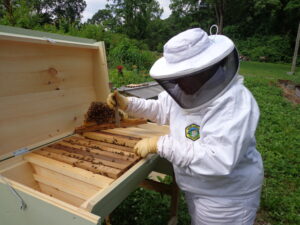
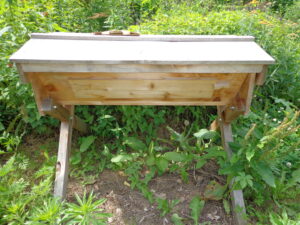
Introduction:
More photos:
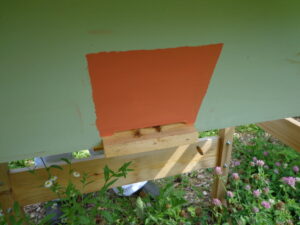
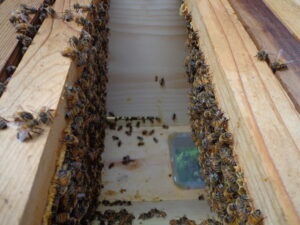
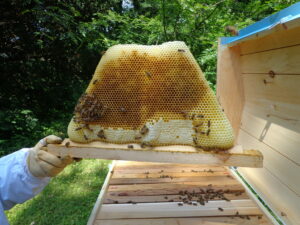
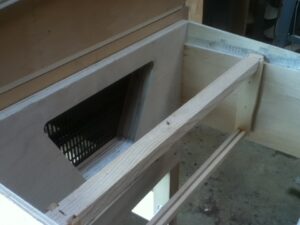
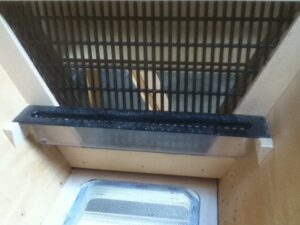
I will construct 15 hybrid hives at an estimated cost of $300 each, including one honey cartridge designed to accommodate Langstroth frames, or top bars, a built-in queen moveable queen excluder, a place holder for SHB traps, a feeder platform for winter feeding of honey, hinged lid, and a versatile have stand which includes a support for the honey cartridge and will hold a utility shelf. Two of these hives will be used on my farm/apiary location. The rest will be hosted in or around Philadelphia. Each location already hosts at least one over-wintered Langstroth hive which will form a basis of comparison when it comes to quantifying increases/decreases in crop/honey yields for years 1 and 2. Each host farm will be asked to plant a 10 x 6 bed of strawberries. The yield from these beds will be calculated and compared to previous years. Total honey harvest in pounds will be compared for 2013 and 2014, along with increased/decreased sales of comb/chunk honey and at what price point.
The number of successfully over-wintered colonies will be reported along with the number of bee colonies lost to swarms and dead-outs. I have overwintered bee packages in top bar hives with much greater success than in Langstroth hives. This fall, all of my top bar colonies are doing well whereas Southern package bees have already crashed.I plan to use PA bee breeders for Northern acclimatized stock as much as are available in early spring. Beekeepers collaborating with our hybrid hive test sites will be part of our two year evaluation process and will receive a nominal stipend for participating in the research project. The project technical advisor(s) will collect reporting data using a form we have created for this purpose. Reporting will cover the months of April through September for 2013 and 2014.
Our evaluation will assess:
How many pounds, on average, of capped honey does each honey cartridge yield? What is the average weight of a full honey cartridge? Is a full honey cartridge easy to remove and carry? How well does a swap-out of full to empty honey cartridges work during the height of a honey flow? Is the hybrid hive sufficiently bee tight to prevent robbing? Does the queen-excluder function as intended? How easy is it to add/remove sticky board sections for Varroa mite counts? How do bees respond to the strips of copper in the internal feeding platform? Does this feature generate extra propolis that is easy to collect? Can this hive be divided into a parent colony and a 5 frame nucleus hive (splits)? Do the hybrid hive bees overwinter at the same rate of loss or at a better rate of survival as Langstroth hive colonies? If so, does the increased survival rate or ease or rearing local queens and bees packages benefit your operation?
Cooperators
Research
Information Products
- 1st Hybrid Top Bar Hive Set Up (Video)
- Top Bar Hive with first year bees. (Video)